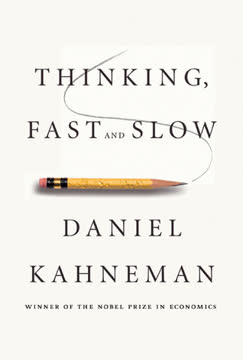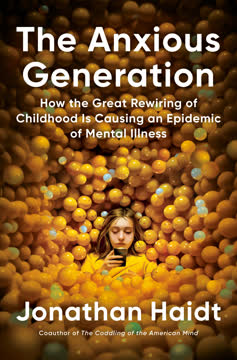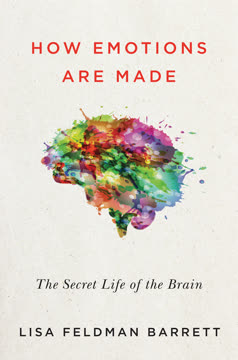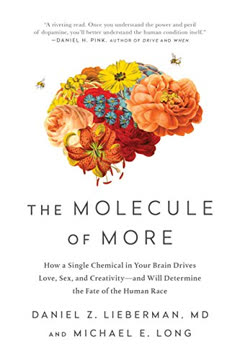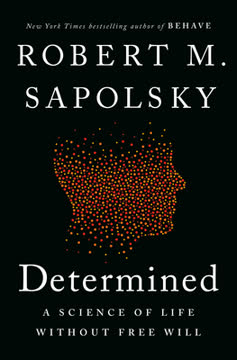ข้อสำคัญ
1. พฤติกรรมถูกกำหนดโดยปฏิสัมพันธ์ที่ซับซ้อนระหว่างยีน สิ่งแวดล้อม และวัฒนธรรม
ยีนไม่ได้เป็นตัวกำหนดเหตุการณ์ทางชีวภาพอย่างอิสระ
อิทธิพลของยีนมีความซับซ้อน แม้ว่ายีนจะมีบทบาทต่อพฤติกรรม แต่ผลกระทบมักจะเล็กน้อยและขึ้นอยู่กับปัจจัยสิ่งแวดล้อมอย่างมาก ปฏิสัมพันธ์ระหว่างยีนและสิ่งแวดล้อมหมายความว่ายีนเดียวกันอาจแสดงผลต่างกันในบริบทที่แตกต่างกัน เช่น
- ยีน MAOA ที่เคยถูกเรียกว่า "ยีนนักรบ" จะเพิ่มความก้าวร้าวเฉพาะในผู้ที่เคยถูกทำร้ายในวัยเด็กเท่านั้น
- ยีน DRD4 ที่เกี่ยวข้องกับการแสวงหาความแปลกใหม่ มีผลแตกต่างกันตามบริบททางวัฒนธรรม
ปัจจัยทางวัฒนธรรมมีความสำคัญ วัฒนธรรมมีบทบาทในการกำหนดการแสดงออกของยีนและผลกระทบของสิ่งแวดล้อมต่อพฤติกรรม ปัจจัยทางวัฒนธรรมที่สำคัญได้แก่
- แนวคิดแบบกลุ่มรวมตัวกับแนวคิดแบบปัจเจก
- ความไม่เท่าเทียมทางเศรษฐกิจและสังคม
- ความเชื่อทางศาสนาและอุดมการณ์
- ประสบการณ์ทางประวัติศาสตร์เกี่ยวกับความขัดแย้งหรือความร่วมมือ
2. โครงสร้างและหน้าที่ของสมองพัฒนาไปตลอดชีวิต ส่งผลต่อพฤติกรรม
บริเวณสมองส่วนหน้าที่พัฒนาเต็มที่เป็นส่วนสุดท้าย (ในแง่จำนวนซินแนปส์ การหุ้มไมอีลิน และเมตาบอลิซึม) โดยจะสมบูรณ์ในช่วงวัยกลางยี่สิบ
สมองมีความยืดหยุ่นตลอดเวลา สมองยังคงเปลี่ยนแปลงและปรับตัวตลอดชีวิตตามประสบการณ์และสิ่งแวดล้อม ปัจจัยสำคัญของความยืดหยุ่นของสมองได้แก่
- การตัดแต่งและเสริมสร้างซินแนปส์
- การสร้างเซลล์ประสาทใหม่ในบางบริเวณของสมอง
- การเปลี่ยนแปลงการหุ้มไมอีลินที่ส่งผลต่อความเร็วในการส่งสัญญาณ
มีช่วงเวลาสำคัญในการพัฒนา ช่วงเวลาพัฒนาบางช่วงมีความสำคัญต่อการกำหนดโครงสร้างและหน้าที่ของสมอง เช่น
- วัยเด็กตอนต้น: การสร้างและตัดแต่งซินแนปส์อย่างรวดเร็ว
- วัยรุ่น: การเจริญเติบโตของสมองส่วนหน้าที่ควบคุมอารมณ์และการตัดสินใจ
- วัยผู้ใหญ่: ความยืดหยุ่นยังคงมีอยู่แต่ช้ากว่าในช่วงก่อนหน้า
3. ฮอร์โมนมีบทบาทละเอียดอ่อนในการกำหนดพฤติกรรมทางสังคมและความก้าวร้าว
เทสโทสเตอโรนทำให้เรากล้าที่จะทำในสิ่งที่จำเป็นเพื่อรักษาสถานะ
บริบทมีความสำคัญ ฮอร์โมนอย่างเทสโทสเตอโรนและออกซิโทซินไม่มีผลกระทบที่ง่ายและเหมือนกันในทุกสถานการณ์ ผลกระทบขึ้นอยู่กับบริบททางสังคมและความแตกต่างของแต่ละบุคคล เช่น
- เทสโทสเตอโรนอาจเพิ่มพฤติกรรมที่เป็นประโยชน์ต่อสังคมหากนั่นคือวิธีที่จะได้สถานะ
- ออกซิโทซินช่วยเสริมความผูกพันในกลุ่ม แต่ก็อาจเพิ่มความเป็นศัตรูกับคนนอกกลุ่ม
ความสัมพันธ์ระหว่างฮอร์โมนและพฤติกรรมเป็นสองทาง พฤติกรรมสามารถส่งผลต่อระดับฮอร์โมนได้เช่นเดียวกับที่ฮอร์โมนมีผลต่อพฤติกรรม เช่น
- การชนะการแข่งขันทำให้ระดับเทสโทสเตอโรนเพิ่มขึ้น
- การสร้างความสัมพันธ์ทางสังคมเพิ่มระดับออกซิโทซิน
4. ประสบการณ์ในวัยเด็กส่งผลยาวนานต่อพฤติกรรมและการทำงานของสมองในวัยผู้ใหญ่
ความยากลำบากในวัยเด็กเพิ่มโอกาสที่ผู้ใหญ่จะมี (ก) ภาวะซึมเศร้า วิตกกังวล และ/หรือการใช้สารเสพติด (ข) ความสามารถทางปัญญาที่บกพร่อง โดยเฉพาะในสมองส่วนหน้าที่ควบคุมการทำงาน (ค) การควบคุมแรงกระตุ้นและการจัดการอารมณ์ที่บกพร่อง (ง) พฤติกรรมต่อต้านสังคม รวมถึงความรุนแรง และ (จ) ความสัมพันธ์ที่สะท้อนความยากลำบากในวัยเด็ก เช่น อยู่กับคู่ครองที่ทำร้าย
ความเครียดในวัยเด็กมีผลระยะยาว ความยากลำบากในวัยเด็กสามารถเปลี่ยนแปลงโครงสร้างและหน้าที่ของสมองอย่างถาวร เช่น
- ฮอร์โมนความเครียดที่สูงขึ้นส่งผลต่อการพัฒนาของฮิปโปแคมปัสและสมองส่วนหน้า
- การประมวลผลอารมณ์ในอะมิกดาลาถูกเปลี่ยนแปลง
ประสบการณ์เชิงบวกก็สำคัญ สภาพแวดล้อมที่อบอุ่นและสนับสนุนในวัยเด็กช่วยส่งเสริมการพัฒนาสมองที่ดีและความยืดหยุ่น เช่น
- ความผูกพันที่มั่นคงช่วยให้ควบคุมอารมณ์ได้ดีขึ้น
- สภาพแวดล้อมที่กระตุ้นและหลากหลายช่วยพัฒนาความสามารถทางปัญญา
5. วัยรุ่นเป็นช่วงเวลาสำคัญของการพัฒนาสมองและรูปแบบพฤติกรรม
หากในวัยรุ่น ระบบลิมบิก ระบบอัตโนมัติ และระบบต่อมไร้ท่อทำงานเต็มที่ ในขณะที่สมองส่วนหน้ากำลังเรียนรู้วิธีประกอบชิ้นส่วน เราก็จะเข้าใจว่าทำไมวัยรุ่นถึงทั้งน่าหงุดหงิด ยอดเยี่ยม โง่เขลา หุนหันพลันแล่น สร้างแรงบันดาลใจ ทำลายล้าง ทำร้ายตัวเอง ไม่เห็นแก่ตัว เห็นแก่ตัว เป็นไปไม่ได้ และเปลี่ยนแปลงโลกได้
การเจริญเติบโตของสมองส่วนหน้าเป็นกุญแจสำคัญ การพัฒนาช้าของสมองส่วนหน้าซึ่งควบคุมการตัดสินใจและอารมณ์ อธิบายพฤติกรรมวัยรุ่นหลายอย่าง เช่น
- การเสี่ยงภัยและแสวงหาความตื่นเต้นที่เพิ่มขึ้น
- การตอบสนองทางอารมณ์ที่รุนแรงขึ้น
- ความยากลำบากในการควบคุมแรงกระตุ้นและวางแผนระยะยาว
อิทธิพลของเพื่อนสูงสุด วัยรุ่นมีความไวต่ออิทธิพลทางสังคมมากเป็นพิเศษ เช่น
- ความไวต่อการถูกปฏิเสธทางสังคมเพิ่มขึ้น
- ความต้องการได้รับการยอมรับจากเพื่อนสูง
- การเสี่ยงภัยมากขึ้นเมื่ออยู่กับเพื่อน
6. ความแตกต่างทางวัฒนธรรมส่งผลอย่างมากต่อพฤติกรรม ความคิด และบรรทัดฐานทางสังคม
ผลกระทบของวัฒนธรรมมีขนาดใหญ่
การรับรู้และความคิดแตกต่างกัน วัฒนธรรมต่าง ๆ กำหนดวิธีที่ผู้คนประมวลผลข้อมูลและมองโลก เช่น
- วัฒนธรรมปัจเจกนิยมเน้นวัตถุหลักในภาพ
- วัฒนธรรมกลุ่มนิยมให้ความสำคัญกับบริบทโดยรอบมากกว่า
พฤติกรรมทางสังคมได้รับอิทธิพลจากวัฒนธรรม บรรทัดฐานทางวัฒนธรรมกำหนดการปฏิสัมพันธ์ระหว่างบุคคลและการตัดสินทางศีลธรรม เช่น
- แนวคิดเรื่องความยุติธรรมและความเป็นธรรมแตกต่างกันในแต่ละวัฒนธรรม
- การแสดงออกและการควบคุมอารมณ์แตกต่างกัน
วัฒนธรรมมีการเปลี่ยนแปลงอย่างต่อเนื่อง วัฒนธรรมยังคงพัฒนาและปรับตัว เช่น
- โลกาภิวัตน์นำไปสู่การผสมผสานและการสร้างวัฒนธรรมใหม่
- การเปลี่ยนแปลงทางเทคโนโลยีสร้างบรรทัดฐานและวิถีชีวิตใหม่
7. วิวัฒนาการกำหนดพฤติกรรมมนุษย์ แต่เรามักเบี่ยงเบนจากการคาดการณ์ของวิวัฒนาการ
โดยธรรมชาติแล้วมนุษย์มีความสับสนอย่างลึกซึ้ง—มีแนวโน้มหลายภรรยาเล็กน้อย ล่องลอยอยู่ระหว่างสองแบบ
ระบบการผสมพันธุ์ของมนุษย์ยืดหยุ่น ต่างจากสัตว์หลายชนิดที่มีรูปแบบการผสมพันธุ์ตายตัว มนุษย์มีแนวโน้มทั้งแบบผูกพันคู่และหลายภรรยา เช่น
- วัฒนธรรมส่วนใหญ่อนุญาตให้มีหลายภรรยา แต่ส่วนใหญ่บุคคลมีความสัมพันธ์แบบผูกพันคู่ทางสังคม
- ความแตกต่างทางเพศในมนุษย์อยู่ระหว่างสัตว์ที่ผูกพันคู่และสัตว์ที่แข่งขันกัน
ความร่วมมือขยายเกินกว่าญาติ มนุษย์แสดงความร่วมมือในระดับที่ไม่เคยมีมาก่อนกับคนที่ไม่ใช่ญาติ เช่น
- สังคมขนาดใหญ่ต้องการความร่วมมือระหว่างคนแปลกหน้า
- สถาบันวัฒนธรรมส่งเสริมความร่วมมือเกินกว่ากลุ่มญาติ
8. ความร่วมมือและความเสียสละเกิดจากการคัดเลือกทั้งในระดับบุคคล ญาติ และกลุ่ม
สัตว์ไม่ได้ทำพฤติกรรมเพื่อประโยชน์ของสายพันธุ์ แต่ทำเพื่อเพิ่มจำนวนยีนของตนในรุ่นต่อไป
การคัดเลือกหลายระดับทำงานร่วมกัน พฤติกรรมมนุษย์ถูกกำหนดโดย
- การคัดเลือกในระดับบุคคล: ลักษณะที่ช่วยให้รอดชีวิตและสืบพันธุ์
- การคัดเลือกในระดับญาติ: ช่วยเหลือญาติที่มียีนร่วมกัน
- ความเสียสละตอบแทน: ความร่วมมือกับคนที่ไม่ใช่ญาติเพื่อประโยชน์ร่วมกัน
- การคัดเลือกในระดับกลุ่ม: ลักษณะที่เป็นประโยชน์ต่อกลุ่ม แม้จะมีต้นทุนต่อบุคคล
วัฒนธรรมมีอิทธิพลต่อการคัดเลือก วัฒนธรรมมนุษย์สร้างแรงกดดันใหม่ ๆ เช่น
- บรรทัดฐานทางสังคมส่งเสริมพฤติกรรมที่เป็นประโยชน์ต่อกลุ่ม
- สถาบันอย่างศาสนาและกฎหมายบังคับใช้ความร่วมมือ
9. ประสาทวิทยาศาสตร์เผยเบื้องหลังทางชีวภาพของพฤติกรรมที่ดีที่สุดและแย่ที่สุดของเรา
สมองไม่ใช่จุดเริ่มต้นของพฤติกรรม แต่เป็นเส้นทางสุดท้ายที่ปัจจัยทั้งหมดมาบรรจบและสร้างพฤติกรรม
วงจรประสาทสำหรับศีลธรรมและความเห็นอกเห็นใจ บริเวณสมองสำคัญที่เกี่ยวข้องกับพฤติกรรมที่เป็นประโยชน์ต่อสังคม ได้แก่
- สมองส่วนหน้า: การควบคุมและเหตุผลทางศีลธรรม
- สมองส่วนหน้าอกด้านหน้า: ความเห็นอกเห็นใจและการตรวจสอบความขัดแย้ง
- อะมิกดาลา: การประมวลผลอารมณ์และการตอบสนองต่อความกลัว
พื้นฐานทางชีวภาพของความก้าวร้าวและความรุนแรง ปัจจัยทางประสาทและฮอร์โมนมีส่วนร่วม เช่น
- ความไม่สมดุลระหว่างการควบคุมของสมองส่วนหน้ากับการตอบสนองทางอารมณ์ของระบบลิมบิก
- การเปลี่ยนแปลงของสัญญาณเซโรโทนินและโดปามีน
- ความเครียดในวัยเด็กที่ส่งผลต่อการพัฒนาสมอง
ความยืดหยุ่นเปิดโอกาสให้เปลี่ยนแปลง ความเข้าใจทางประสาทวิทยาศาสตร์ของพฤติกรรมเปิดทางเลือกในการแทรกแซง เช่น
- การบำบัดที่มุ่งเน้นเพิ่มการทำงานของสมองส่วนหน้า หรือลดการตอบสนองของอะมิกดาลา
- การแทรกแซงทางสังคมและสิ่งแวดล้อมเพื่อส่งเสริมการพัฒนาสมองที่ดี
หนังสือ "Behave" โดย Robert Sapolsky นำเสนอความรู้ลึกซึ้งเกี่ยวกับชีววิทยาของมนุษย์ในแง่มุมที่ดีที่สุดและแย่ที่สุดของเราอย่างครบถ้วนและน่าทึ่ง
อัปเดตล่าสุด:
FAQ
What's Behave: The Biology of Humans at Our Best and Worst about?
- Exploration of Human Behavior: The book examines the biological underpinnings of human behavior, focusing on aggression, violence, and prosocial actions. It explores how factors like neurobiology and hormones influence our actions.
- Interdisciplinary Approach: Robert M. Sapolsky integrates insights from neurobiology, psychology, and sociology to provide a comprehensive understanding of human behavior. He argues that behavior requires a multifaceted perspective.
- Contextual Understanding: Sapolsky emphasizes that context is crucial in determining whether a behavior is seen as good or bad, highlighting how the same action can be interpreted differently based on circumstances.
Why should I read Behave: The Biology of Humans at Our Best and Worst?
- Insightful Analysis: Sapolsky offers a deep dive into the complexities of human behavior, making it valuable for those interested in psychology, biology, or social sciences. His engaging style makes complex concepts accessible.
- Relevance to Current Issues: The book addresses societal issues like violence, morality, and empathy, providing a scientific framework to understand these phenomena, making it timely in today's context.
- Encourages Critical Thinking: By challenging simplistic views of behavior, Behave encourages readers to think critically about human motivations, promoting a nuanced understanding of morality and ethics.
What are the key takeaways of Behave: The Biology of Humans at Our Best and Worst?
- Biology and Behavior Interconnected: Biological factors, including hormones and brain structure, significantly influence behavior. Sapolsky argues against distinguishing between biological, psychological, or cultural aspects of behavior.
- Context Matters: The interpretation of behaviors as good or bad is heavily dependent on context. Sapolsky notes that we often hate the wrong kind of violence but love it in the right context.
- Complexity of Human Nature: Human behavior is influenced by genetics, environment, and social learning, requiring a holistic view rather than isolated components.
What are the best quotes from Behave: The Biology of Humans at Our Best and Worst and what do they mean?
- “The opposite of love is not hate; its opposite is indifference.” This highlights the importance of empathy and engagement, suggesting that apathy can be more damaging than active dislike.
- “We are always shadowed by the threat of other humans harming us.” Reflects the inherent risks in human interactions and the potential for violence, underscoring the need to understand aggression's roots.
- “The more we consume, the hungrier we get.” Addresses the paradox of modern life, where increased access to pleasure can lead to greater dissatisfaction, suggesting insatiable desires can have negative consequences.
How does Robert M. Sapolsky explain aggression in Behave?
- Biological Basis of Aggression: Hormones like testosterone and neurobiological factors contribute to aggressive behavior. Testosterone amplifies preexisting tendencies rather than directly causing aggression.
- Contextual Triggers: Aggression often responds to specific social contexts or challenges, with testosterone levels rising in response to social challenges, increasing aggressive behavior likelihood.
- Learning and Experience: Aggression is shaped by social learning and past experiences, with learned behaviors playing a significant role in future aggression.
What role do hormones play in human behavior according to Behave?
- Influence of Testosterone: Testosterone amplifies existing tendencies rather than causing aggression outright, with its actions being contingent and amplifying.
- Oxytocin and Social Bonds: Oxytocin fosters social bonding and prosocial behavior but also promotes in-group favoritism, making us more prosocial to Us and worse to everyone else.
- Stress Hormones: Chronic stress hormones impair cognitive function and emotional regulation, leading to impulsive and aggressive behaviors, affecting decision-making and empathy.
How does Behave address the concept of free will?
- Skepticism of Free Will: Sapolsky doubts traditional free will, suggesting behaviors are influenced by biological and environmental factors beyond individual control, leading to more compassionate views.
- Complex Interplay of Factors: Behavior results from genetics, hormones, and social context, making it difficult to attribute actions solely to free will.
- Implications for Justice: This perspective challenges moral culpability, suggesting understanding behavior's biological basis can lead to more effective interventions than punitive measures.
What does Robert M. Sapolsky say about the effects of childhood adversity in Behave?
- Long-term Consequences: Childhood adversity links to negative outcomes in adulthood, including mental health issues and antisocial behavior, with multiple adversities dimming chances of a happy adulthood.
- Biological Mechanisms: Early-life stressors elevate glucocorticoid levels, impairing brain development and function, increasing anxiety, depression, and aggression risks.
- Resilience Factors: Despite risks, many individuals with childhood adversity do not develop significant issues, with supportive relationships mitigating adversity effects.
How does Behave explain the relationship between empathy and behavior?
- Empathy as a Complex Emotion: Empathy involves emotional and cognitive components, allowing understanding and sharing of others' feelings, leading to prosocial behavior but can be overwhelming.
- Neurobiological Underpinnings: Brain regions like the anterior cingulate and insula activate when witnessing others in pain, with regulation of adverse empathic emotions leading to prosocial actions.
- Adolescent Empathy: Adolescents experience heightened empathy, leading to positive and negative outcomes, with empathic hyperarousal sometimes hindering effective action.
How does Behave address the impact of culture on behavior?
- Cultural Influences on Behavior: Cultural norms and values shape behaviors, including aggression and prosocial actions, with culture shaping how and where we look at the world.
- Variability Across Cultures: Behaviors acceptable in one culture may differ in another, with moral judgments differing cross-culturally, crucial for addressing global issues.
- Cultural Context in Empathy: Cultural background affects empathic responses and social interactions, with oxytocin's actions depending dramatically on context, influencing how we relate to others.
How does Behave connect behavior to evolutionary biology?
- Evolutionary Perspective on Behavior: Behaviors are understood through evolution, with traits enhancing survival and reproduction favored over time.
- Kin Selection and Altruism: Behaviors promoting relatives' survival can be advantageous for passing on shared genes, illustrating altruism's evolutionary basis.
- Cultural Evolution: Biological traits evolve, and cultural traits change over time, influenced by environmental pressures and social dynamics.
How does Behave relate to current societal issues?
- Understanding Violence and Aggression: Insights into biological and environmental factors contributing to violence and aggression, essential for reducing violence and promoting peace.
- Mental Health Implications: Understanding biological basis of mental health issues, advocating for compassionate treatment approaches, informing policies and practices.
- Promoting Empathy and Cooperation: Emphasizes fostering empathy and cooperation in addressing societal challenges, understanding biological foundations to create a compassionate society.
รีวิว
Behave เล่มนี้เจาะลึกพฤติกรรมมนุษย์ผ่านมุมมองทางชีววิทยา วิวัฒนาการ และวัฒนธรรม โรเบิร์ต ซาโปลสกี้ รวบรวมงานวิจัยจากหลากหลายสาขา ทั้งประสาทวิทยา ฮอร์โมน พันธุกรรม และสิ่งแวดล้อม เพื่ออธิบายว่าทำไมมนุษย์จึงแสดงพฤติกรรมในแบบที่เป็นอยู่ หนังสือเล่มนี้ได้รับคำชมอย่างกว้างขวางในเรื่องความครอบคลุมเนื้อหา การเขียนที่น่าสนใจ และอารมณ์ขันของซาโปลสกี้ แม้บางเสียงวิจารณ์จะมองว่าหนังสือมีความซับซ้อนและบางครั้งอาจมีอคติ แต่หลายคนยกให้เป็นผลงานปฏิวัติที่ท้าทายความคิดแบบง่าย ๆ เกี่ยวกับธรรมชาติของมนุษย์ ซาโปลสกี้เน้นย้ำถึงความซับซ้อนของพฤติกรรม โดยคัดค้านการอธิบายด้วยสาเหตุเดียว และชี้ให้เห็นถึงความสัมพันธ์ระหว่างชีววิทยาและสิ่งแวดล้อมที่ร่วมกันกำหนดการกระทำของมนุษย์อย่างลึกซึ้ง
Similar Books
